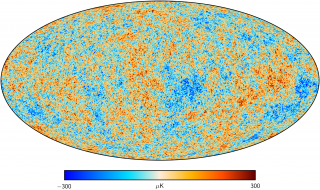Bibcode
Planck Collaboration; Abergel, A.; Ade, P. A. R.; Aghanim, N.; Arnaud, M.; Ashdown, M.; Aumont, J.; Baccigalupi, C.; Balbi, A.; Banday, A. J.; Barreiro, R. B.; Bartlett, J. G.; Battaner, E.; Benabed, K.; Benoît, A.; Bernard, J.-P.; Bersanelli, M.; Bhatia, R.; Bock, J. J.; Bonaldi, A.; Bond, J. R.; Borrill, J.; Bouchet, F. R.; Boulanger, F.; Bucher, M.; Burigana, C.; Cabella, P.; Cardoso, J.-F.; Catalano, A.; Cayón, L.; Challinor, A.; Chamballu, A.; Chiang, L.-Y.; Chiang, C.; Christensen, P. R.; Clements, D. L.; Colombi, S.; Couchot, F.; Coulais, A.; Crill, B. P.; Cuttaia, F.; Danese, L.; Davies, R. D.; Davis, R. J.; de Bernardis, P.; de Gasperis, G.; de Rosa, A.; de Zotti, G.; Delabrouille, J.; Delouis, J.-M.; Désert, F.-X.; Dickinson, C.; Dobashi, K.; Donzelli, S.; Doré, O.; Dörl, U.; Douspis, M.; Dupac, X.; Efstathiou, G.; Enßlin, T. A.; Eriksen, H. K.; Finelli, F.; Forni, O.; Frailis, M.; Franceschi, E.; Galeotta, S.; Ganga, K.; Giard, M.; Giardino, G.; Giraud-Héraud, Y.; González-Nuevo, J.; Górski, K. M.; Gratton, S.; Gregorio, A.; Gruppuso, A.; Guillet, V.; Hansen, F. K.; Harrison, D.; Henrot-Versillé, S.; Herranz, D.; Hildebrandt, S. R.; Hivon, E.; Hobson, M.; Holmes, W. A.; Hovest, W.; Hoyland, R. J.; Huffenberger, K. M.; Jaffe, A. H.; Jones, A.; Jones, W. C.; Juvela, M.; Keihänen, E.; Keskitalo, R.; Kisner, T. S.; Kneissl, R.; Knox, L.; Kurki-Suonio, H.; Lagache, G.; Lamarre, J.-M.; Lasenby, A. et al.
Referencia bibliográfica
Astronomy and Astrophysics, Volume 536, id.A25
Fecha de publicación:
12
2011
Revista
Número de citas
206
Número de citas referidas
193
Descripción
Planck allows unbiased mapping of Galactic sub-millimetre and millimetre
emission from the most diffuse regions to the densest parts of molecular
clouds. We present an early analysis of the Taurus molecular complex, on
line-of-sight-averaged data and without component separation. The
emission spectrum measured by Planck and IRAS can be fitted pixel by
pixel using a single modified blackbody. Some systematic residuals are
detected at 353 GHz and 143 GHz, with amplitudes around -7% and +13%,
respectively, indicating that the measured spectra are likely more
complex than a simple modified blackbody. Significant positive residuals
are also detected in the molecular regions and in the 217 GHz and 100
GHz bands, mainly caused by the contribution of the J = 2 → 1 and J
= 1 → 0 12CO and 13CO emission lines. We
derive maps of the dust temperature T, the dust spectral emissivity
index β, and the dust optical depth at 250 μm
τ250. The temperature map illustrates the cooling of the
dust particles in thermal equilibrium with the incident radiation field,
from 16 - 17 K in the diffuse regions to 13 - 14 K in the dense parts.
The distribution of spectral indices is centred at 1.78, with a standard
deviation of 0.08 and a systematic error of 0.07. We detect a
significant T - β anti-correlation. The dust optical depth map
reveals the spatial distribution of the column density of the molecular
complex from the densest molecular regions to the faint diffuse regions.
We use near-infrared extinction and Hi data at 21-cm to perform a
quantitative analysis of the spatial variations of the measured dust
optical depth at 250 μm per hydrogen atom
τ250/NH. We report an increase of
τ250/NH by a factor of about 2 between the
atomic phase and the molecular phase, which has a strong impact on the
equilibrium temperature of the dust particles.
Corresponding author: A. Abergel, e-mail: alain.abergel [at] ias.u-psud.fr (alain[dot]abergel[at]ias[dot]u-psud[dot]fr)
Proyectos relacionados

Anisotropía del Fondo Cósmico de Microondas
El objetivo general de este proyecto es determinar y estudiar las variaciones espaciales y espectrales en la temperatura del Fondo Cósmico de Microondas y en su Polarización en un amplio rango de escalas angulares que van desde pocos minutos de arco hasta varios grados. Las fluctuaciones primordiales en la densidad de materia, que dieron origen a
Rafael
Rebolo López